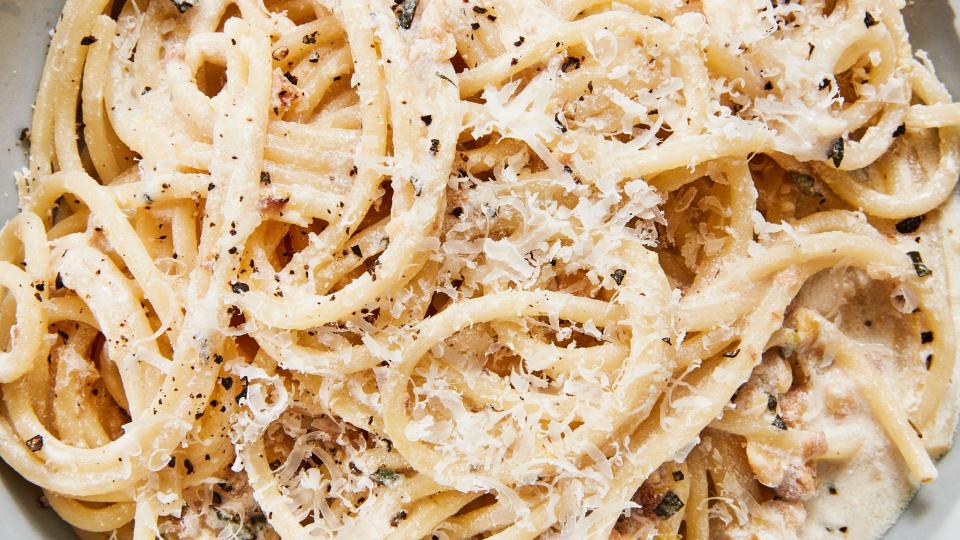Oregano Is For So Much More Than Pizza
Maybe you've only encountered oregano as the fish food-y flakes you sprinkle on pizza. And while it is, indeed, an important slice shop staple, it can—and should—be used for so much more. The dried stuff certainly has its place (pizza, yes, and also dry rubs, vinaigrettes, and sauces, too), but fresh oregano is even more powerful and versatile. (BTW, we’re talking about Mediterranean oregano here, be it Italian, Turkish, or Greek. Mexican oregano shares similar flavors but belongs to a different family.)
While oregano is largely considered a “hardy herb” (akin to rosemary and thyme), it actually straddles the line between hardy and tender. It doesn’t just belong to one camp. The stems are thick enough that branches will hold together when cooked, even through long braises or simmers. Where cilantro, dill, or basil will turn brown and wilt away to virtually nothing when introduced to heat, oregano holds its form. Yet the leaves, while more substantial than silky, are still delicate enough that eating them doesn’t feel like an unpleasant jaw exercise. This is unlike rosemary or sage, which are pretty unpleasant without some heat from the oven or the stove or a really, really fine chop.

The taste of oregano also plays both sides. The fresh leaves are peppery and assertive—sometimes even bitter or astringent. They enliven whatever they're scattered over, be it a savory melon salad, or a piece of fish—and a little goes a long way. But when cooked, its flavor mellows so that it's earthy but not aggressively woodsy. It’s powerful enough to hold its own in dishes with bold flavors, like smoky grilled chicken or slow-roasted bell peppers.
These One-Pan Chicken Thighs with Burst Tomatoes, Harissa, and Feta take advantage of its two sides. You throw a whole sprig of oregano into a cast-iron skillet with chicken thighs so that the piney flavor can seep into the chicken fat, infusing the meat and the bursting cherry tomatoes. Then you discard the limp remains, plate the chicken, and scatter some fresh leaves on top for fresher, sharper flavor.
You can even play around with using both, a practice endorsed by senior food editor Molly Baz. “If you see a recipe that calls for dried oregano, try cutting it with some fresh leaves, too” she says. “In a Greek salad? Delicious! Chopped up with the parsley garnish on Pork Marbella? Why not!” Mixed into this classic Italian dressing? Have at it!” Just remember that the fresh leaves are way more potent than the dried stuff, so tread lightly.
Next up: Sprinkling fresh and dried oregano on a slice of pizza. Now that’s fine-dining.
Go go oregano:
One-Pan Chicken Thighs with Burst Tomatoes, Harissa, and Feta
Originally Appeared on Bon Appétit


